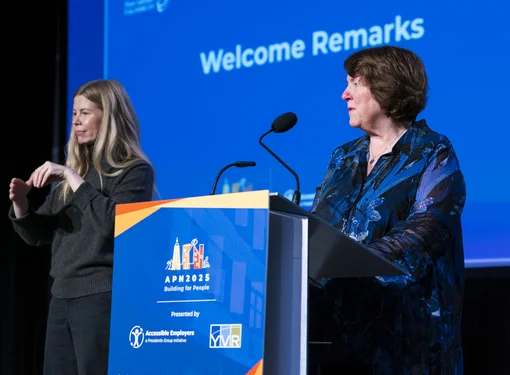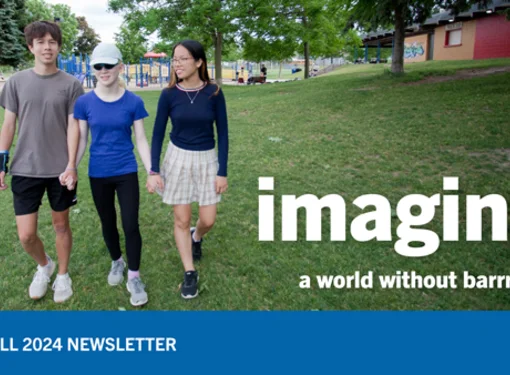How to close the employment gap for people with disabilities
Did you know that September is Disability Employment Month in British Columbia? In B.C., approximately 334,000 people aged 15 to 64 self-identify as having a disability, and only 55 per cent of this group are employed (compared to 78 per cent of the general population). People with disabilities often face multiple barriers when looking for work, and even when employed; attitudinal barriers about hiring or working with someone with a disability continue to exist, and physical barriers and lack of assistive technology in the workplace can be a problem even after a person is hired.
What can be done to make hiring and workplaces more inclusive?
To start, it’s crucial to be aware of negative stereotypes and attitudes towards people with disabilities. In order to make workplaces more inclusive, the way others think and talk about people with disabilities in the workplace needs to change. Business leaders should recognize that people with disabilities have a lot of professional skills and knowledge to offer, and are capable of bringing new insights and perspectives to their organizations.
Organizationally, companies can create and implement a policy for inclusive hiring practices, and promote it to all current and potential employees. Companies can also hold sensitivity training sessions to help foster an environment of open communication, collaborative teamwork, acceptance, and inclusiveness within all departments and at all levels.
Business owners can also have their offices evaluated to discover accessibility issues with the built environment. The Rick Hansen Foundation’s Accessibility Team does on-site assessments in the lower Mainland, and our specialists can provide practical and economical advice to easily update workplaces. On average, it only takes about $500 or less to make a commercial space physically accessible!
What can you do if you’re having trouble finding work?
If you’re a job seeker with a disability, there are a number of resources that can help with your search.
A general resource for all job seekers is LinkedIn, the world’s largest online professional network. Many companies and recruiting firms use LinkedIn to both post job opportunities and search for potential candidates, so be sure to have all your education, volunteering and employment history listed. It's also important to add a personal, but professional-looking, picture to your profile as well.
If you’ve recently finished school and are lacking in professional experience, try volunteering. ConnecTra Society is an excellent resource that connects people with physical disabilities to activities and programs that will help you gain confidence and become more active and involved in community life and the workforce. Volunteering is a great way to gain valuable experience and make connections with people in your profession.
There are also a number of specialized employment services and resources in B.C. that specifically assist job hunters with disabilities:
- WorkBC’s specialized groups services offers job options and services designed to support people with disabilities to help build a career.
- The BC Partners in Workforce Innovation project connects people with diverse abilities to employment opportunities.
- Accessible Employment BC is a job listing site for people with disabilities who are looking for work opportunities and for employers who wish to diversify their workforce.
- Neil Squire Society’s Technology@Work Program provides assistive technology to volunteers, imminently employed and employed individuals with disabilities.
Dr. Gary Birch, executive director of the Neil Squire Society sums up why employing people with disabilities is so important: “For many people with disabilities, employment can help them live more independent lives and become active members in their community.” Finding meaningful employment allows people with disabilities to live to their full potential and actively participate in life. Let’s all work together to help close the employment gap.






